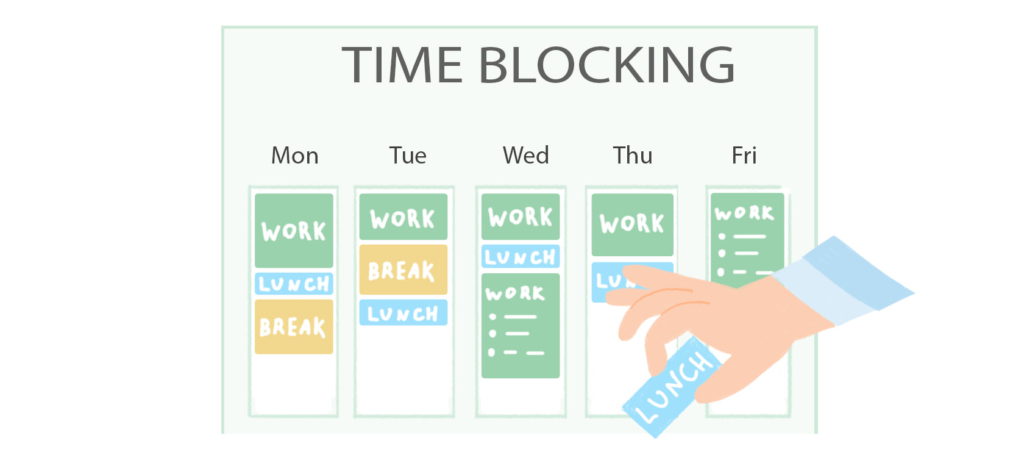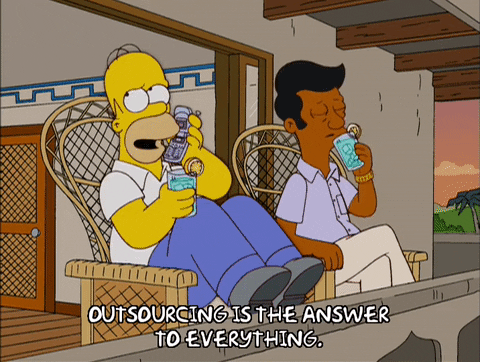Looking for ways to manage your time and increase your chill? Then you’ve come to the right place! Besides having one of the best time tracking software solutions and the best time management tools, we offer these simple time management strategies that you can employ in your personal life or business. There are also some effective time management techniques you can follow to enhance your time management skills. Without further ado, let’s take a look at each one of them!
1. Assess Your Time: Identifying Time Drains and Prioritizing Tasks
Before you can even begin to engage in a time management plan, it’s essential to know what you’re actually spending your time doing. You might be surprised to learn that you spend way more time than you think returning emails and answering messages, which is the first step to understanding how to trim down that time, or if that’s not an option, how to accommodate that time and adjust other things in your day around it.
Who it’s good for: Anyone looking to optimize their time management. This technique is particularly useful for professionals overwhelmed by tasks and needing to identify time drains.
2. How to Plan Your Day for Maximum Efficiency
Before you close up shop and end your workday, sit down with your planner, calendar, or whatever you use to keep track of your to-do lists and what you need to get done.

Write down a list of the most important things you have to do the next day, and then make sure you have everything you need to hit the ground running when you get back to your desk in the morning. Tidy up, make sure everything’s charged, sticky notes stuck, etc.
It doesn’t hurt to keep a daily calendar of inspirational images on your desk or quotes on time management as a homepage in your browser. You’d be surprised how much a clever or insightful phrase can motivate!

26 Famous Time Management Quotes to Motivate You and Your Team
A master list of the best time management quotes out there to keep you inspired and away from procrastination.
Who it’s good for: Busy professionals, students, and anyone with a hectic schedule. This technique helps individuals who need structure and a clear plan to start their day effectively.
3. Organize Your Morning Routine
When we follow an easy, low-maintenance morning routine, it sets the stage for the mood for the rest of the day. Even if it’s just a shower, coffee, and breakfast before you even look at anything work-related, make it a ritual, it doesn’t have to be a big deal as long as it puts you in a space of relaxed focus.

When you do get to your desk, be mindful of your time when you read and respond to emails and messages to make sure you’re staying on track, then revisit the task list you made the night before and prioritize them based on new information you may have received through any new emails and messages, deadlines, etc.
Time blocking is an excellent method for prioritizing your tasks and staying on track. For more information about time blocking and how it works check out:

Time Management Worksheet for Accurate Time Blocking
How to make all your tasks manageable, organize your time effectively, and digitize your diary with this time blocking technique.
Who it’s good for: Individuals who struggle with starting their day on the right foot. This is especially beneficial for those who find mornings chaotic or who want to boost productivity from the outset.
4. Put Unpleasant Tasks First
Start achieving your daily goals by completing the most unpleasant tasks first. The reasoning behind this is twofold: first, your focus is sharper and less fatigued at the beginning of the day, you’re able to think more clearly and efficiently. The second is perhaps more important when it comes to stress – if you procrastinate, that task will loom over you. Just get it out of the way, it’ll feel so good to strike it off your to-do list and that weight will be lifted. (BTW, this time management technique is particularly useful for students.)
Who it’s good for: People who procrastinate or feel overwhelmed by daunting tasks. Ideal for anyone who needs to tackle tough tasks head-on to prevent them from hanging over their heads all day.
5. Pad Your Schedule
ALWAYS budget more time than you predict you’ll need to complete a task, not only because sometimes you’ll need more time than you expected, but also because you need some time to come up for air.
When your watch or timer tells you to stand up, do it! Take a quick walk to get the circulation flowing, and clear your head. Oh, and unless you’re a robot, you may need a bathroom break or two.

Who it’s good for: Professionals and students who often find themselves running out of time. Useful for anyone needing to account for unexpected interruptions and avoid burnout.
6. Eliminate Distractions: Tips to Stay Focused and Productive
When starting a new task our brain takes time to get accustomed to it. This means that if we get distracted, we need time to get back to the same level of concentration. Besides, nothing is more frustrating than spending some time devising how you’ll approach the task, then just as you’re ready to dig into it, someone texts you with something unimportant. Now you’ve lost your pace and have to refocus to start over!
No one loves that, so eliminate as many distractions as possible. Turn off your cell phone to avoid pop-up messages and social media, find a comfortable place away from noises and talkative colleagues, and consider using the Pomodoro technique.

How to use Pomodoro technique to dramatically increase your focus and productivity
Could a simple kitchen timer in the shape of tomato make a MASSIVE difference in organizing your daily routine?
Who it’s good for: Those who work in environments prone to interruptions or who struggle with focus. This technique is beneficial for anyone needing a quiet, distraction-free workspace.
7. Communicate
While eliminating distracting factors helps you concentrate, we do recommend reaching out and communicating when it can save you some time and brain overload.
One well-formed question to the right person can save you hours of work or scrolling through the internet in search of the answer! Also, it’s a good way to build a great working relationship with your coworkers and ensure that your team members are in sync with each other.
Who it’s good for: Team members and collaborators who need to coordinate tasks or clarify uncertainties. Essential for anyone working in team settings or remote environments where communication is key.
8. Avoid Multitasking
Experts have been saying for years that multitasking has a negative effect on our brains and our productivity. It reduces our ability to concentrate which opens us up for more mistakes, more time wasted fixing avoidable mistakes, and more stress.
One of the ways we can avoid multitasking is to use project management software – Asana is one of the crowd favorites – and a time tracker that seamlessly integrates with it. When working in conjunction with one another, they systematize your tasks in order and help review the estimated time you’re spending on each.
Reviewing the time you and your team spend on tasks throughout the day or week is a key part of time management in other ways, too. It gives you a leg-up by providing insight into how efficiently you and your team used resources for past projects, so you can plan future projects more efficiently knowing how much time and other resources you’ll need to complete specific tasks, and who is best suited for what tasks.
Who it’s good for: Individuals who find themselves juggling multiple tasks at once and experiencing decreased productivity. Particularly useful for those needing to focus deeply on specific tasks.
9. Delegate
Delegation is one of the best ways to get some of those things off your plate that are eating your time. If there’s someone you work with (or who works for you) that can do that task just as well or better, team up and ask for some help, particularly if you see that person’s schedule allows it. This isn’t confined to the work environment, either. Ask for help with tasks at home so you can get in a little more downtime.

Also, learn to say no. If someone invites you to lunch and you know it’s going to end up as a two-hour social call, take a rain check for when you may have a little more time to spare.
No one likes saying no to others, particularly when you’d really like to participate or help someone. It’s uncomfortable, but sometimes necessary.
Who it’s good for: Managers, team leaders, and anyone feeling overwhelmed by their workload. This technique is useful for people who need to distribute tasks effectively to manage their time better.
10. Reward Yourself!
Give yourself extra incentive to be productive by taking time out to do things that you enjoy after completing a particular task or project – especially the ones you were least looking forward to.
Even if it’s just a run down to your favorite coffee shop or 15 minutes catching up with friends on social media, giving your brain a signal to relax and enjoy can provide you the extra bit of energy you could use to get through the rest of the day. (Another reason why we like the Pomodoro Technique!)
Who it’s good for: Anyone needing motivation to complete tasks. This technique is great for individuals who find it hard to stay motivated throughout the day or week.
11. Read Time-Management Literature
If you want to implement time management techniques fully, you need to develop many skills – concentration, task prioritization, building a routine, consistency, and others. All of them require hard work, and if you want to get results, just one article isn’t enough. It may take time to find a solution that works for you.
We humbly suggest you should do some homework. Read some books by the pros to figure out what works best for you, and what doesn’t:

Top 5 productivity books that are totally worth reading
Here we’ve gathered some of the best books on productivity that you might like, just to get you started.
Who it’s good for: Those looking to deepen their understanding of time management techniques. Ideal for individuals interested in exploring new methods and improving their overall time management skills.
12. Try New Trends
By implementing a new or unusual approach to scheduling, like the 9/80 work schedule, for instance, you may find your productivity increase while your stress decreases.
We’re also big fans of time management games and activities. They’re great for getting out of the rut of traditional time management techniques for a while and exercising your creativity. Plus they’re fun! (Many of these can be done during virtual meetings, too).

Who it’s good for: People who are stuck in a rut with traditional time management methods. This technique is perfect for those looking to refresh their approach and experiment with innovative strategies.
Time Management Techniques: Final Word
As you undoubtedly already noticed, a lot of us beat ourselves up over the things we “should” do. Sometimes, the stress we experience is self-inflicted.
Time management is definitely a key factor in helping us decrease that stress, but it won’t do us a ton of good if we’re stressed about following our time management plan. Ease into your own routine in your own way, and give yourself a break when things don’t work out down to the minute.
Here at Everhour, we are using these effective time management techniques and they seem to be working out well. That’s why we wanted to share them with you, too! You can power up your experience by using best time management apps or best productivity apps.
If you are managing a team of 5 or more and looking to boost efficiency, Everhour is the best time and attendance management software.

